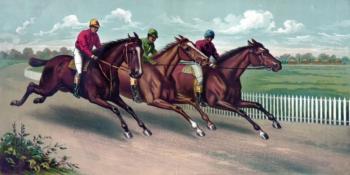A Trip Back In Time: Dice Games
Posted: July 2, 2015
Updated: November 29, 2019
Dice games set the foundation for gambling. So thank the Gods for this tiny invention!
The oldest dice known to us date back 8,000 years, just imagine that… People usually don’t even live a century! Games and pass times, however, always tend to find a way to survive the ages. As did dice. At first, our predecessors used pebbles, seeds and fruit pits to play dice games. Something that actually resembles the dice as we today know it, came a bit later. The Greeks, for example, called them “astragali.” They were made out of animal hooves and bones and their shape actually resembled the cube we today call the dice.
• At first, it was pebbles and shells
• Mesopotamians made the cube
• Survived although illegal
In an age where mobile betting sites weren’t even imaginable, people used cube-like items, which also had two round sides. The cube couldn’t land on the two rounded sides, so only four sides were important. These dice-like things weren’t really used for gambling, but rather by shamans to determine the future. As David Schwartz wrote in his book Roll the Bones: “The line between divination and gambling is blurred. One hunter, for example, might say to another, “If the bones land short side up, we will search for game to the south; if not, we look north,” thus using the astragali to plumb the future.”
The cube is forming…

It was the Mesopotamians around 7,000 years ago who started to form the dice to resemble the distinctive cube shape we use. The rounded sides were filed down and now people had six functional sides for the cube to land on. From hooves and regular bones, their material usage evolved to ivory, whalebone and wood. Shamans made up patterns for the sides at first, but it soon became a popular custom everywhere else, too. To historians’ knowledge, people first started using dice to play board games in the city of Ur, located in South Mesopotamia.
As a result, the board-dice game was named the “Royal Game of Ur” and is considered the early version of Backgammon. An interesting characteristic of the dice they used to play this game was that is had only four sides, and was shaped like a pyramid. The dot pattern and layout of the six-sided dice we used today appeared in Mesopotamia around 1,300 B.C.
Although the Mesopotamians had very advanced tech in agriculture, I wonder how shocked they would have been to see an American online poker site…
Help me, Fortuna!

In Rome, when men rolled the dice, they called out the name of the goddess of luck. Gambling, however, was not so legal back then… but people always found a way. Let’s look at one of the most famous man and his saying: “The die is cast.” Does that ring a bell? Yes, I’m talking about Julius Caesar. As time went by, empires fell and old habits died away. Gambling through the dice, however, didn’t: it actually flourished in the Middle Ages, because it was a cost-effective way to have fun. In Medieval Europe, they created a game called Hazard, which involved dice rolling. It quickly became the favorite game of nobles and peasants alike.
Dice became as popular as mobile casino gambling and luxury casinos today. As a result, dice guilds and schools even formed to teach young talents the art of making a perfect dice. Even with all the bans imposed by the church, dice games were alive and well. It is no wonder then, according to Neatorama, that dice games found their way into early America; what else do you think the crew on the Mayflower played with? The French introduced New Orleans to the game Hazard, and from then on, with newer board games (like Snakes and Ladders,) the dice virtually became immortal.












